Summative Coursework : Organisational Behaviour
Introduction
This study is based on the organizational behavior of the company, which helps them to enhance their teamwork and management system. The organisation behavior is defined as the particular study which helpful to interact the people into the groups and operate the business effectively. It is the theoretical study of how individuals interact within teams. The basic principles of the analysis of ‘organizational behavior’ are used mainly in attempts to make companies work more effectively and make them sustainable (Mullins and McLean, 2019). The purpose of this assignment is to improve the skills of leadership and management, make plans for achieving goals, and motivate employees to work hard for the development of the organization.
1. Motivating factors in organisational behaviour
Motivation is a crucial factor in the management of organisational behaviour. I have applied the theory of “Work motivation and job satisfaction” in order to motivate myself along with my team members. As per the case study, every organisation has an alternative form of its corporate structure.
Ha and Lo, (2018) have stated that the “neo-human relations” approach is applicable in satisfying the workers since this approach analyses the psychological orientation of the workers for analysing their thoughts regarding the work culture. On the contrary, Igbokwe-Ibeto et al. (2020) have reviewed that the management theory is more application for motivating the team members and eventually increase their productivity.
This framework highlights the management theories to maintain the organizational behaviour among team members and motivate other employees and staff members in order to maintain a good balance of relations among employees.

Figure 1: Management Theories
(Source: Daddi et al. 2018)
2. Categorization of personality and characteristics within organisation
The utilisation of the “four-fold framework” has been helpful in categorising my characteristics and personality. According to the case study, the mentioned framework categorises the personality trait into classical, contingency, systems, and human relations approaches. These approaches are helpful in the process of proper decision-making, which confirms the success of the teamwork required within the organisation.
According to Mousa et al. (2020), the theory of “individual differences and diversity” is applicable in analysing and comparing self-capabilities with that of the other team members. This model shows the development skills for personality enhancement, which can be very useful for the team and the company in order to make proper decision-making, human relations and relationship building.
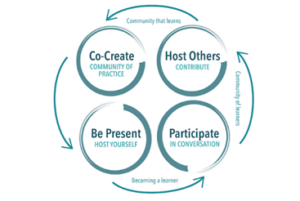
Figure 2: Four-fold framework
(Source: Mousa et al. 2020)
3. Significance of understanding perception and communication
The proper understanding of communication and perception is very significant for enhancing the team spirit and optimising the organisational goal. As claimed by Gunasekaran et al. (2018), the theory of “perception and communication” focuses on the development of proper management thinking such as team management, interpretation of relevant information, and postmodernism. Team management is done by communicating with the team members regarding the assigned tasks on a regular basis.
An evaluation of the perceptions of the team members is beneficial in obtaining an idea about their behavioural criteria toward the organisation. Through this model it also help me in the significance of communication and interpretation in the organization among team members through which it can be easy for them to fulfil and achieve their targets.

Figure 3: Interpretation and Communication model
(Source: Courey et al. 2022)
4. Team management criteria within organisation
The case study demonstrates that the utilisation of part-time workers is less useful than the full-time workers in terms of team management. I have utilised the “Approaches to organisational and management” in order to manage the team working so far. Team management requires a continuous supervision of the team members, which is possible only with the full-time employees (Delibasic et al. 2021). The supervision and mitigation of the frustration, friction, and conflict among the team members is required for enhancing team working. With the help of this model I can particularly highlighting the methods of team building in the organization with the reduction of personal conflicts and frustration and enhancing teamwork to achieve required goals.

Figure 4: Team building approach
(Source: Delibasic et al. 2021)
5. Self Contribution to staff members
The assignment of “work group and team” is important for achieving the ultimate goal within the project deadline. I have implemented the theory of “strategy and structure” in order to enhance my contribution toward the other staff members and students. Hunter, (2018) has argued that this theory pays attention to the overall development of the organisation based on the effective performance of the employees with the desired team spirit.
I have contributed my patience, knowledge, and experience to the team members in order to induce the relevant organisational behaviour within them. This model shows us the strategy and pattern of growth of the group members in the organization along with enhancing the knowledge and sales for the higher revenue of the company.

Figure 5: Approach to the pattern of growth of team members
(Source: Hunter, 2018)
6. Learning outcomes of the interaction
During the course of this interaction, I have learned that providing the team members and workers with a positive work culture is crucial for achieving the ultimate organisational goal. Moreover, interacting with the team members regularly can help in building a trustworthy relationship with the staff members and enhance the corporate structure at the same time (Adamonienė et al. 2021).
As per the case study, the interaction is helpful in influencing the organisational structure and maintaining the cultural balance with the organisation. The theory of “culture and change” is applicable in diagnosing the cultural background of the other team members and mitigating the cultural difference among them through interaction. This results in organisational change at a positive note which is supported by the team members and enhances their organisational behaviour.
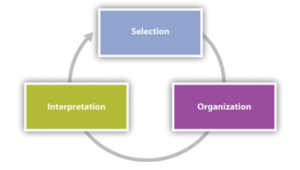
Figure 6: Factors affecting Culture and Change theory
(Source: Dubey et al. 2019)
7. Contribution of the other team members
The other group members have contributed their communication, social and technical skills during the teamwork. The case study reveals that group meetings on a regular basis are helpful in obtaining and sharing each other’s views regarding the organisational teamwork (Alasad, 2020). The other members have also contributed toward the enhancement of interpersonal relationships among the group members that eventually increased the team spirit, team flexibility, and team effectiveness.
This framework shows the interpersonal relationship among the group members, which improves their relationship and helps to maintain the better surrounding in the workplace. The team members focused on finding new opportunities that could be beneficial for the team and implementing their respective skills in the decision-making phase.
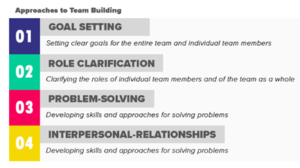
Figure 7: Interpersonal Relationship
(Source: Alasad, 2020)
8. Plans for achieving future goals
The following plans can be implemented in future for achieving the organisational aims.
- “Survey research and feedback” can be done by executing a relevant questionnaire with the team members in order evaluate their feelings regarding my performance in terms of proper organisational behaviour.
- T-groups are face-to-face meetings with the team members that help in setting the structure of the organisational activities (Limna et al. 2022).
- Team building focuses on enhancing a trustworthy bond among the team members by analysing the strengths and weaknesses of the team members. Grid training pays attention to the strategic changes required for the betterment of the organisation.
- Role analysis helps in allocating tasks to the team members based on their respective skills.
- Career planning would encourage the team members in developing their personal goals that will eventually increase their productivity skills.
- Counselling would be beneficial in motivating the team members to have a low self-esteem.
This model highlights the contribution of the team members in the company, which improves the environment of the organization. Further through this model I can clearly identify my future goals and improve my skills according to it.
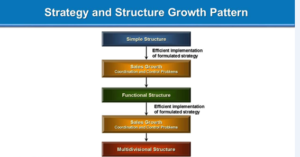
Figure 8: Future Goals
(Source: Limna et al. 2022)
9. Assessment of the organisational functioning
The assessment of the overall organisational functioning is based on the way in which i and the other students have worked together. There has been provided the different types of organisational classification along with the depiction of the ways in which the relevant type needs to be chosen. I have applied the theory of “Control and power” in order to explain the significance of maintaining the decorum of the work culture within the organisation (Amiri et al. 2019). This model helps employees to balance their personal lives with professional work along with maintaining the decorum of the workplace.
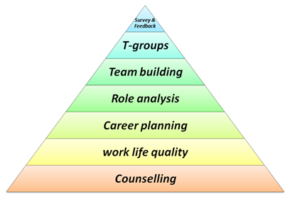
Figure 9: Control & Power Framework
(Source: Xia et al. 2018)
10. Skills required for appropriate organisational behaviour
The course of the accomplishment of the organisational goals demands the following skills.
- Leadership skill: A good leadership quality is helpful in providing a clear view of the missions and vision of the organisation to the team members. It also helps the leader to inspire the team members to work better.
- Problem solving skill: This skill is crucial for analysing the issues faced by the team members and solving those with proper mitigating actions (Rezaei et al. 2018).
- Decision-making skill: a proper decision-making skill contributes to the overall success of the organisation. A right decision can uplift the reputation of the organisation by around 65%.
This theory focuses on leadership skills and improves problem-solving techniques and decision-making ability.

Figure 10: Skills for Organizational leadership
(Source: Rezaei et al. 2018)
11. Leadership and Management ideas obtained from the group activity
Based on today’s group work, I have realised that leadership and management skill is very important for maintaining the unity and discipline among the team members. The theory of “Leadership and Management” is applicable for assessing the “nature of organisational behaviour” of the team members (Stankevičiūtė et al. 2021). The theory works on the enhancement of the strategic thinking, emotional intelligence, delegation, communication skills, motivating approaches, integrity and flexibility among the team members. Moreover, the management and leadership skills are also beneficial for maintaining the ethical considerations required among the team members.

Figure 11: Factors concerning to Management and Leadership Theory
(Source: Stankevičiūtė et al. 2021)
12. Skills required for team working and group cohesiveness
During the group work, I have offered the team members skills that could influence the group cohesiveness. I have utilised the CSR Model in order to make the team members aware of the organisational reputation. The theory enhances the management, listening, and communication skills among the team members (Hunter, 2018). This theory acts as an encouraging element, which finally enhances organisational sustainability. The goal achievement is easier with the implementation of the concepts of this model. This theory helped me to manage the behavior of the company with the help of the CSR model, which results in good surroundings for the company.

Figure 12: CSR model
(Source: Carlini et al. 2019)
Reference
Adamonienė, R., Litavniece, L., Ruibytė, L. and Viduolienė, E., 2021. Influence of individual and organisational variables on the perception of organisational values. Engineering Management in Production and Services, 13(2).
Alasad, H., 2020. The Impact of Agile Processes on Organisational Behaviour Within Current Banking Practice (Doctoral dissertation, Auckland University of Technology).
Amiri, R., Almasi, M.A., Andrews, J.G. and Mehrpouyan, H., 2019. Reinforcement learning for self organization and power control of two-tier heterogeneous networks. IEEE Transactions on Wireless Communications, 18(8), pp.3933-3947.
Carlini, J., Grace, D., France, C. and Lo Iacono, J., 2019. The corporate social responsibility (CSR) employer brand process: integrative review and comprehensive model. Journal of Marketing Management, 35(1-2), pp.182-205.
Courey, K., Oswald, F. and Culpepper, S., 2022. Clearer Analysis, Interpretation, and Communication in Organizational Research: A Bayesian Guide.
Daddi, T., Todaro, N.M., De Giacomo, M.R. and Frey, M., 2018. A systematic review of the use of organization and management theories in climate change studies. Business Strategy and the Environment, 27(4), pp.456-474.
Delibasic, M., Zubanov, V., Pupavac, D. and Potocnik, T.J., 2021. Organisational behaviour during the pandemic. Polish Journal of Management Studies, 24(1).
Dubey, R., Gunasekaran, A., Childe, S.J., Blome, C. and Papadopoulos, T., 2019. Big data and predictive analytics and manufacturing performance: integrating institutional theory, resource‐based view and big data culture. British Journal of Management, 30(2), pp.341-361.
Gunasekaran, A., Dubey, R., Fosso Wamba, S., Papadopoulos, T., Hazen, B.T. and Ngai, E.W., 2018. Bridging humanitarian operations management and organisational theory. International Journal of Production Research, 56(21), pp.6735-6740.
Ha, S.T. and Lo, M.C., 2018. An empirical examination of knowledge management and organisational performance among Malaysian manufacturing SMEs. International Journal of Business Innovation and Research, 17(1), pp.23-37.
Hunter, M., 2018. What lies beneath organisational behaviour: the role of hidden and unconscious processes at work (Doctoral dissertation, London Metropolitan University).
Igbokwe-Ibeto, C.J., Mac-Ozigbo, A.A. and Agbasi, O., 2020. ORGANISATIONAL BEHAVIOUR AND PUBLIC SERVICE DELIVERY IN AFRICA: ISSUES, CHALLENGES AND THE WAY FORWARD. In SOCIAL SCIENCES INTERNATIONAL RESEARCH CONFERENCE (p. 675).
Limna, P., Sitthipon, T., Siripipattanakul, S., Jaipong, P. and Auttawechasakoon, P., 2022. The Mediating Effect of Job Satisfaction Between the Relationship of Ethical Change Management and Organisational Performance in Thailand. Review of Advanced Multidisciplinary Sciences, Engineering & Innovation, 1(1), pp.1-15.
Mousa, M., Massoud, H.K. and Ayoubi, R.M., 2020. Gender, diversity management perceptions, workplace happiness and organisational citizenship behaviour. Employee Relations: The International Journal.
Mullins, L.J. and McLean, J.E., 2019. Organisational behaviour in the workplace. Harlow: Pearson.
Rezaei, A., Allameh, S.M. and Ansari, R., 2018. Effect of organisational culture and organisational learning on organisational innovation: an empirical investigation. International Journal of Productivity and Quality Management, 23(3), pp.307-327.
Stankevičiūtė, Ž. and Savanevičienė, A., 2021. Linkage between Leaders’ Behaviour in Performance Management, Organisational Justice and Work Engagement in Public Sector. Economies, 9(1), p.15.
Xia, S., Bu, S., Wan, C., Lu, X., Chan, K.W. and Zhou, B., 2018. A fully distributed hierarchical control framework for coordinated operation of DERs in active distribution power networks. IEEE Transactions on Power Systems, 34(6), pp.5184-5197.
Know more about UniqueSubmission’s other writing services:

